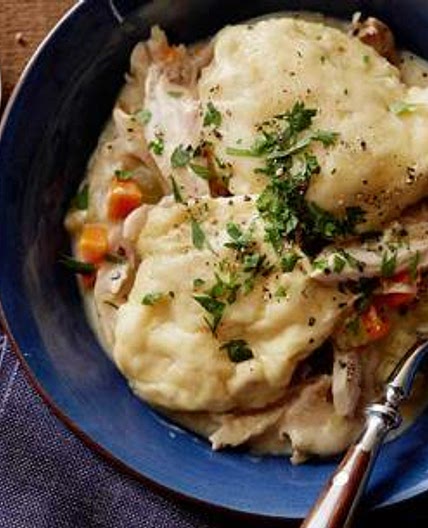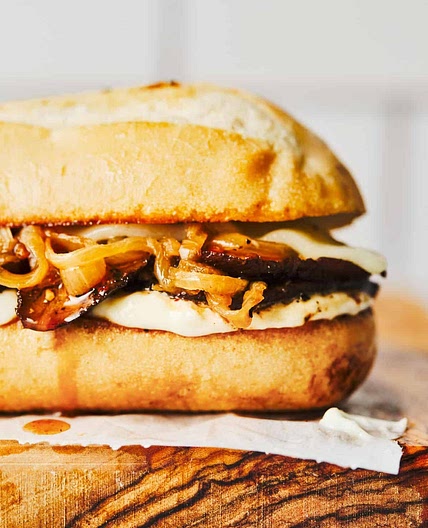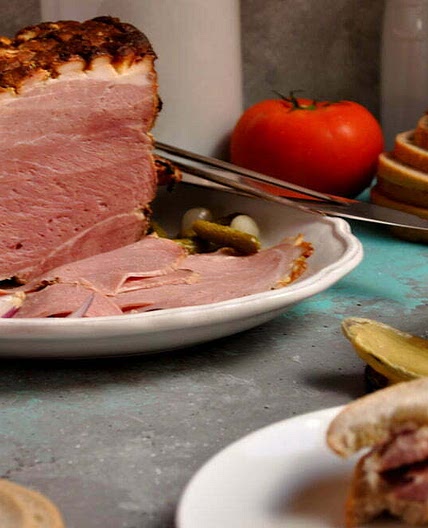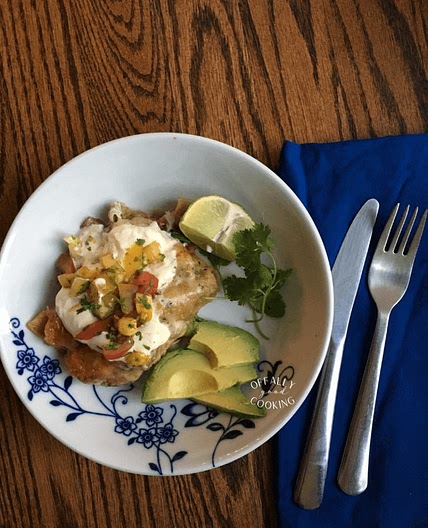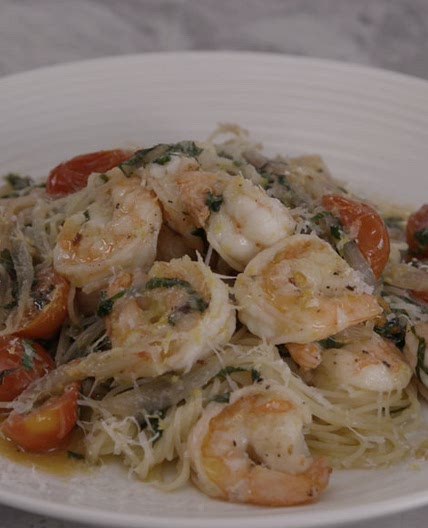White Wine Poached Fish with Roasted Cauliflower and Fresh Herbs
Leave a note
By Dining with Skyler
White Wine Poached Fish with Roasted Cauliflower and Fresh Herbs
13 steps
Cook:30min
This recipe is great for any frozen white fish. It's extremely easy, there's no defrosting and most importantly, the fish tastes delicious. We poach the frozen fish in a white wine, garlic, shallot and tomato mixture, then pair it with a beautiful roasted cauliflower.
Updated at: Tue, 15 Jul 2025 03:43:14 GMT
Nutrition balance score
Unbalanced
Glycemic Index
24
Low
Glycemic Load
13
Moderate
Nutrition per serving
Calories608.6 kcal (30%)
Total Fat33.5 g (48%)
Carbs52 g (20%)
Sugars10.7 g (12%)
Protein17.2 g (34%)
Sodium2595.1 mg (130%)
Fiber4.7 g (17%)
% Daily Values based on a 2,000 calorie diet
Ingredients
2 servings
1 headcauliflower
cut into even sized pieces
1 Tbspolive oil
for seasoning, give or take
salt
to taste
pepper
to taste
2frozen white fish fillets
preferably tilapia or cod Flounder works but will cook very quickly and flake if its extra thin! )
1 Tbspbutter
unsalted
1 Tbspolive oil
2cloves of garlic
minced
1shallot
medium, minced or finely chopped
1 cupdiced tomatoes
½ cupwhite wine
obv pick a cheap one I used $5 chardonnay
1 tspkosher salt
reserve some more if you need it
1 Tbsplemon juice
½ cupwater
1 ½ tspchickpea flour
can sub for gf all purpose, rice flour or regular all purpose flour
Fresh dill
for topping, optional
Fresh parsley
for topping, optional
pepper
Fresh cracked, for topping, optional
Instructions
Step 1
Preheat the oven to 450 degrees F.
Step 2
Heat a dutch oven (or medium large pot with a lid) on medium low heat. Combine 1 tbsp butter and 1 tbsp olive oil, until the butter is melted. Add the shallot and garlic, then spread them around until fully coated in the butter mixture. Adjust the heat to low, then put the lid on and let them sweat for 5 minutes.
Step 3
While the garlic and onion "sweat," prep the cauliflower. Place all of the pieces of cauliflower in a mixing bowl and toss in the olive oil. Add salt and pepper to taste and toss until the cauliflower is fully coated.
Step 4
Line the cauliflower up on a sheet pan (or 2 pans, don't over crowd your pan!) with the largest flat side of the cauliflower facing down. Roast the cauliflower for 20 minutes, until slightly tender inside and crispy on the outside.
Step 5
Return to the dutch oven and add the diced tomatoes to your garlic and onion mixture. Adjust the heat to medium low and let the mixture cook for 2-3 minutes. Then, add the white wine, water, lemon juice and salt. Taste the liquid to make sure it's salty enough for your liking (every salt is different, and it's important to have ample salt so your fish can absorb some flavor.) If it's just slightly salty, add another pinch. The salt will help enhance the flavors of the wine, butter, and lemon. Keep tasting and you'll know when it's right for you!!! Avoid adding too much. Little by little is best!
Step 6
Slightly lower the heat so that it's a slightly lower "medium low" than before, then add the frozen fish to the poaching liquid. Try to submerge it as much as you can. If the fish isn't even halfway covered, this means that your pot is too large. If you don't have any other pots, add more of the poaching liquids until the fish is almost fully covered. (I would start with half of the measurements provided, then work your way up if its necessary.) Put the lid on top and let the fish cook for 10 minutes. If the fish is stuck together from being frozen in a weird position, don't break the fish. Just let it cook for a few minutes until they begin to thaw and you can separate it.
Step 7
After 10 minutes, check on the fish and flip it over or adjust it as necessary. If your fish filets were small or thin, they may be done cooking! You'll know that they're done if they appear fully white and no longer translucent. If they're not done, put the lid back on and let them continue to cook for another 10 minutes. If they seem like they're *almost* done, then check back on them in 5 minutes. You can never be too careful!!
Step 8
Remove the cauliflower and put on a plate or in a flat bowl.
Step 9
With a spatula, remove the fish from the liquid and place it onto the cauliflower in separate bowls.
Step 10
Put a strainer over a sauce pan, then drain out the liquid from the shallot, tomato and garlic mixture. Set the mixture aside as we will use it for topping.
Step 11
Heat the liquid over medium heat. Add the flour and whisk very fast until the liquid begins to develop a thicker, saucy consistency. Lower the heat and continue to stir for 4-5 minutes. Taste to make sure the salt and acid levels are to your liking. If they aren't, add a little more lemon juice (for acid) or add a little more salt (for saltiness.) If your sauce seems too thin, add a little more flour (1/2 tsp at a time, then repeat the whisking.) If the sauce is too thick, add a little more liquid of your choice. Stock, wine, lemon juice or water all work here. If you use all-purpose flour, cook a little longer until the flour taste is fully cooked off. I use chickpea flour because I think it actually helps the flavor and its healthier (obv.)
Step 12
Pour the sauce onto the fish. Load up as much as you'd like.
Step 13
Top each fish with the shallot, garlic and tomato mixture. Then, top with fresh herbs and a little bit of freshly cracked pepper. Serve immediately!
View on Dining with Skyler
↑Support creators by visiting their site 😊
Notes
0 liked
0 disliked
There are no notes yet. Be the first to share your experience!
